Three years ago I told the team we were hosting a conference for creators.
At our team retreat in Oceanside, CA a small group of us gathered on the roof to brainstorm ideas. We didn’t have a venue, a city, speakers, dates, or really anything else. But what we did have was a lot of experience attending conferences and strong opinions on what makes a great event.
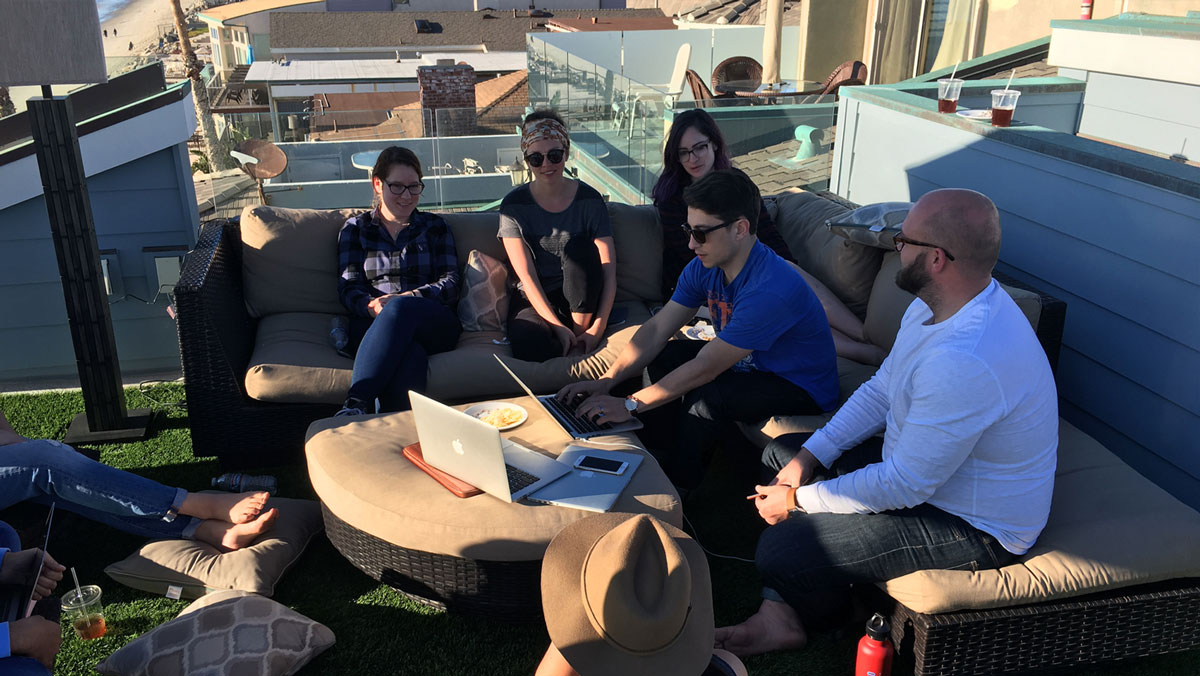
Choosing a city
With the entire country available to us we had to narrow down to just a few cities we were actually considering for the conference. Most teammates suggested their home cities and creator hubs. We ended up with a list of possible cities:
- Nashville
- Boise
- San Diego
- Austin
- Portland
Conference identity is closely tied to the city where you host it. A New York City conference will have a very different feeling than a San Diego conference.
The World Domination Summit (WDS), one of our favorite events, is shaped so heavily by the unique culture and venues in Portland. It would be a completely different event if it were hosted in Vegas or some other popular conference city.
We eliminated Austin because our team doesn’t have any ties there. After careful thought, we removed Portland because WDS is already hosted there and we have a decent overlap with that community. And finally San Diego was eliminated because there are already so many events there.
That left Nashville and Boise—both are up and coming cities, well-loved by those who live there.
I really wanted to host the conference in Boise since that is where I grew up and where ConvertKit was founded. Plus, most of our attendees would have never been there before, so they would forever associate Boise with ConvertKit and our conference.
The problems of Boise
While Nashville is centrally located near most of the population of the United States (part of why so many musicians tour from there), Boise is the most isolated capital city in the continental United States. Drive 5 hours from Boise in any direction and you won’t hit another city.
That means travel to Boise is more difficult and expensive than to Nashville.
Plenty of people want to vacation in Nashville, few put Boise at the top of their list. As Seth Godin said after speaking at the first Craft + Commerce, “No one knows they want to go to Boise, until they’ve been to Boise.”
Ultimately we chose Boise in spite of these issues. There isn’t a single conference in our industry in Boise, many of our attendees would have never been before, so we could craft the experience exactly the way we want.
Naming the conference
Most software companies name their conference something related to their company name. ConvertKitCon or something. Except that we wanted to create a conference for creators, not just ConvertKit customers. The event should be about them, not us. So we needed a unique name.
We dreamed up a lot of names and asked our branding agency to make suggestions as well. But ultimately we settled on a name that had been in the back of our minds for a long time: Craft + Commerce.
Back when Barrett Brooks, our COO and mastermind behind this conference, worked at Fizzle they had talked about hosting an event. Together they dreamed up the name Craft + Commerce to talk about the intersection between honing your craft and creating great art, but also earning a great living from it.
When we asked Chase and Corbett at Fizzle for permission to use the name, they were thrilled to let us use it and see the event come to life. Chase even opened conference our very first year with an incredible talk called “Start Feeling it Now” that I still think of often, even years later.
Choosing a venue
Ballrooms? Theatres? Or something else entirely? The venue sets the tone for the entire event. A giant empty ballroom with round tables has a different feeling than a grand theatre, which feels different from a more unique event space.
When we knew Boise would be the home to Craft + Commerce, Ashley (our director of operations) and I started touring venues.
At first we wanted a theatre because that setting places more implied value on the talks. Unfortunately there are only three theaters large enough in downtown Boise, and none of them were a good fit. The Egyptian, which is the closest, would work well as a theatre, but the lobby is tiny and so there isn’t any space for the attendees to meet and mingle outside of events.
Then we toured JUMP (Jack’s Urban Meeting Place), which is a creative event center funded by the family of Idaho billionaire J.R. Simplot (he’s the one who made Idaho famous for potatoes).
JUMP is bright, creative, has a great view, and you always know what time of day it is—which is the opposite of Vegas.
Everyone who visits JUMP absolutely loves it. Along with Boise, JUMP has given Craft + Commerce a unique feeling.
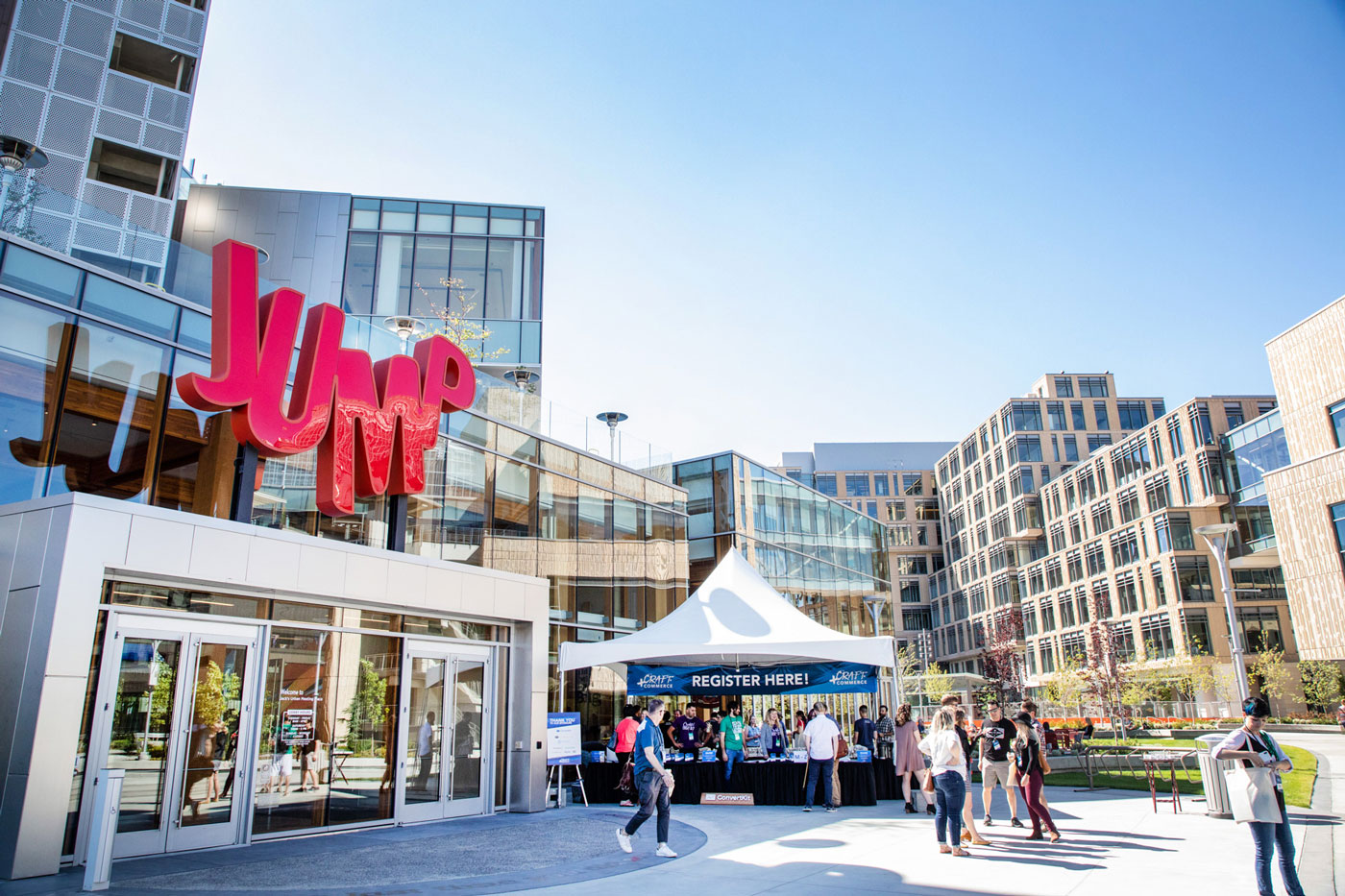
Speakers
It’s no surprise that a great conference requires great talks. There are four elements that we think are key to great talks:
- Curate speakers you want to hear
- Limit talks to a length that can be practiced
- Recruit a diverse line-up
- Invest in your speakers
Curate speakers you want to hear
Yes, it’s obvious, but I feel like so many speakers are there to fill a slot or because the organizer thought they would sell tickets, rather than being personally curious and interested in the talk.
We went out of our way to find speakers who had interesting stories, represented different markets, and most importantly, we wanted to hear from. The barometer was, “do I want to know your story?”
We featured an adventure filmmaker, a succulent enthusiast (with a thriving business), a school teacher, a LEGO event host, and many more great creators who we were genuinely curious to learn more about.
Limit the talks to a length that can be practiced
For some reason most conference talks are an hour long. It fits nicely in a schedule: you talk for an hour, then I will, then she’ll go on, then it’s time for lunch.
For a professional line-up that could work just fine. But most conference speakers are refining their craft and not yet ready to hold an attendees attention for an hour (I know I’m not!).
So one of the best moves we’ve made is to limit most of our talk times to 20 minutes. Why that long? It’s short enough that you have to cut a lot of material and make a single, memorable point, with a few supporting points and stories. No rambling allowed.
But just as important, you can practice a 20 minute talk repeatedly. With an hour long talk you’d run through slides, practice a few key stories, and rehearse transitions. But you can’t make time to repeatedly practice a full run through as is necessary.
A 20 minute talk you could run through every day for the week leading up to the event. It is short enough you can fit in a practice session before starting work for the day or before heading out to dinner in the evening. That means your jokes will be funnier, your wording more precise, and your slides better designed.
If a speaker really needs more time (and they are experienced), we’ll give them 30 minutes. Sometimes we add a dedicated Q&A afterwards for our keynotes.
Speaker diversity
In the tech and entrepreneurship conference scene diversity on stage is painfully bad, and that often leads to equally homogenous groups of attendees. When we wrote out the first draft of our speaker list and it was mostly white and male, we decided we were going to invite an equal number of men and women to speak. That would be a big step towards diversity on stage, right?
As I’m sure you already realize, that was very naive. Nearly all the men accepted and nearly all the women declined because of other obligations. If we’d stuck with parity in our invites we would have ended up with 5 men on stage for every woman.
So we established a new principle: at Craft + Commerce we will always have more women on stage than men.
That means we need to put a disproportionate amount of effort into recruiting female speakers. But this intentionality has paid off incredibly well. All three years we’ve had a diverse line-up which has encouraged more diverse attendees.

Investing in your speakers
Because many of our speakers aren’t professional speakers (in fact for some it’s their first time on a major stage) we hired Mike Pacchione to coach all of our speakers (if they want it). He worked for years as a coach for Duarte and has an incredible idea to distill a general talk into something punchy and hard-hitting the audience will love.
Too often conferences just give a suggested talk topic and a time slot and then are surprised when the end result isn’t incredible. If you want to tell unique stories, expect that your speakers may need help to deliver a next-level talk.
That doesn’t mean every talk is flawless, but working with a speaking coach has definitely raised the bar at Craft + Commerce!
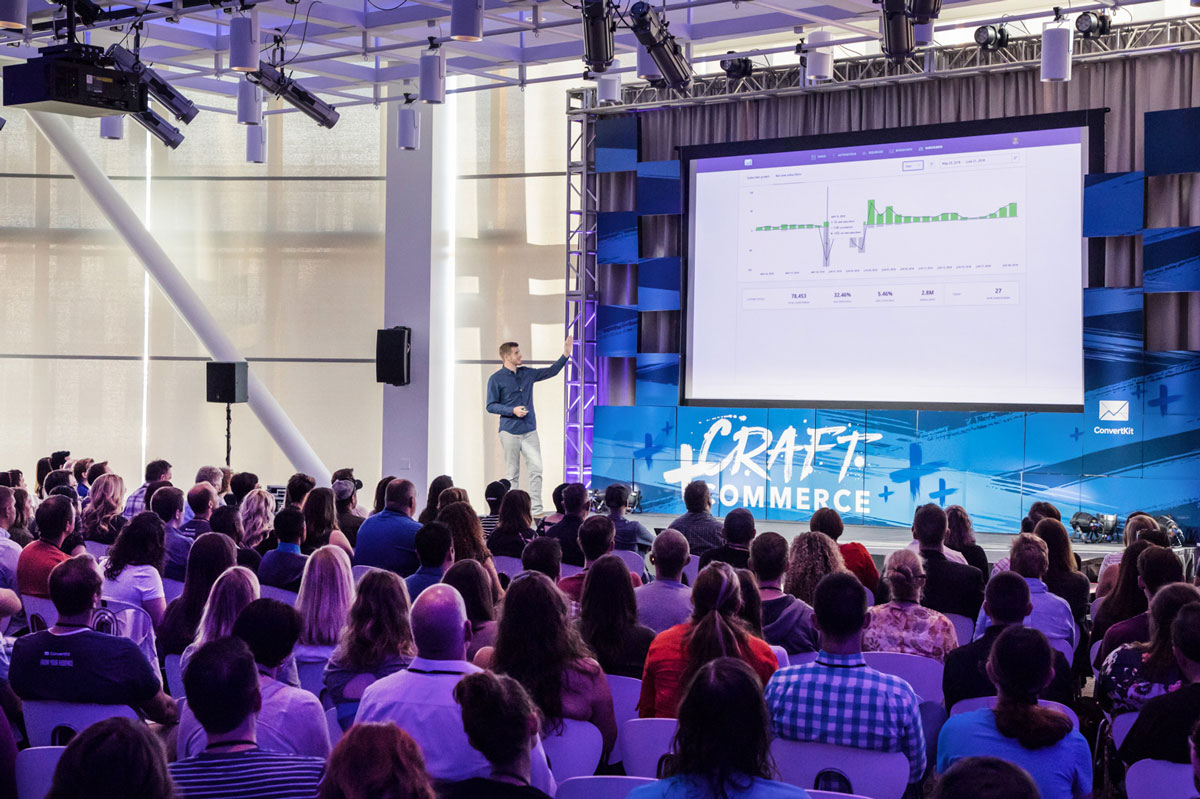
Why we spend $10,000 on breakfast
Few things convey quality like great food. At JUMP (our venue) the in-house catering does an incredible job with the food spreads and it helps shape the entire event. We spend pretty heavily for the opening and closing parties as well as providing breakfast each day of the event.
Breakfast is for the shy and quiet conference attendees who don’t know anyone. If that sounds odd, let me explain.
When I would attend an event and I didn’t know anyone, I would wait in my hotel room for the start time, then go in and sit down in the auditorium. The only people I would meet would be who I sat next to.
Breakfast moves the start time earlier (say 8am instead of 9am), which can be great for those who are traveling from a few timezones away and are up really early, and gives an opportunity to meet not just the person sitting next to you, but the other 5-7 people around a table. Then I have those connections to lean back on as I see those same people throughout the day.
Many of the best connections I’ve made have been over breakfast. So even though it is expensive to provide (and many hotels provide a free breakfast) I think breakfast is money well spent.
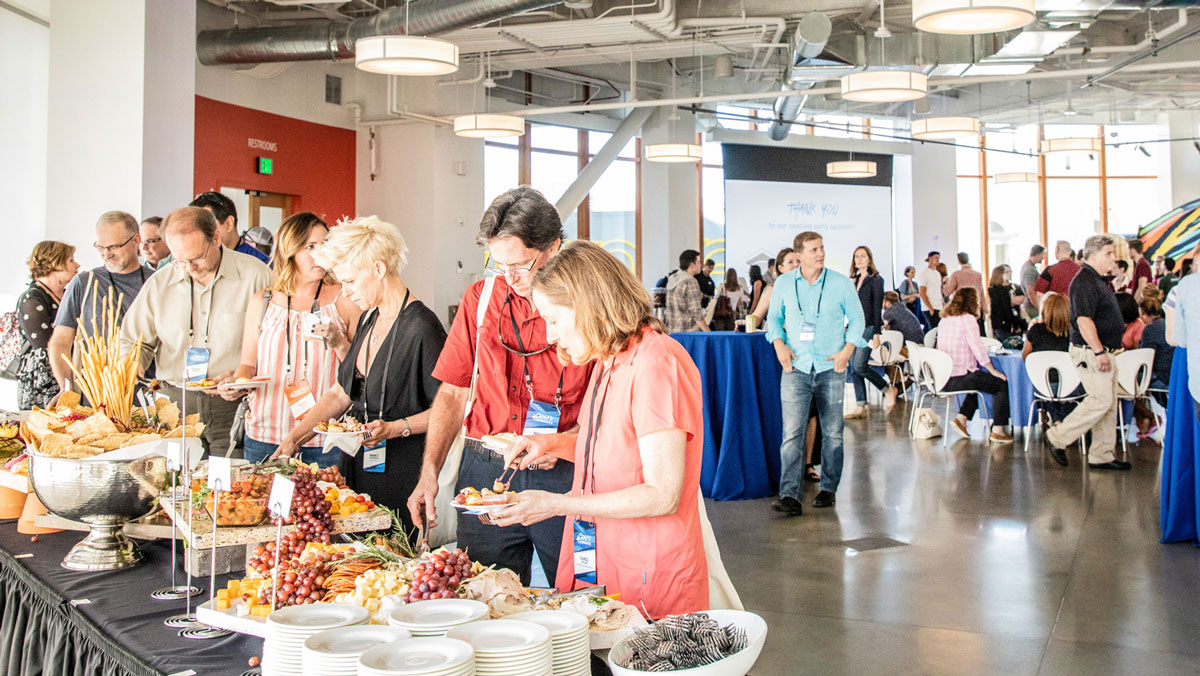
How much we spend each year
Every year I have the same conversation at least once: while standing in the opening party room, looking around at the great food spread, incredible venue, and all the attendees in the room, someone asks, “how much do you make on this event?”
It’s a fair question. We run a business and firmly believe businesses should make a profit. But on Craft + Commerce we actually lose money every year. We purposefully overspend our revenue in order to create the right experience for attendees.
Here is what it cost to run Craft + Commerce each year:
2017: $217,000
2018: $219,000
2019: $228,000 (projected)
The first year we lost over $100,000 and that is expected to decrease to about $60,000 this year. There are plenty of conferences that are great at making money. For that you should definitely learn from someone else!
In 2017 we had a lot fewer paying attendees (about 200), but we spent the most on speakers of any year, which raised the cost of the event.
In 2018 we had more paying attendees (yay for momentum!), spent less on speakers, and were able to reuse a lot of design elements from previous years to save money.
This year we have more sponsors and ticket revenue than ever before, but we still invest heavily in food, speakers, and especially our parties.
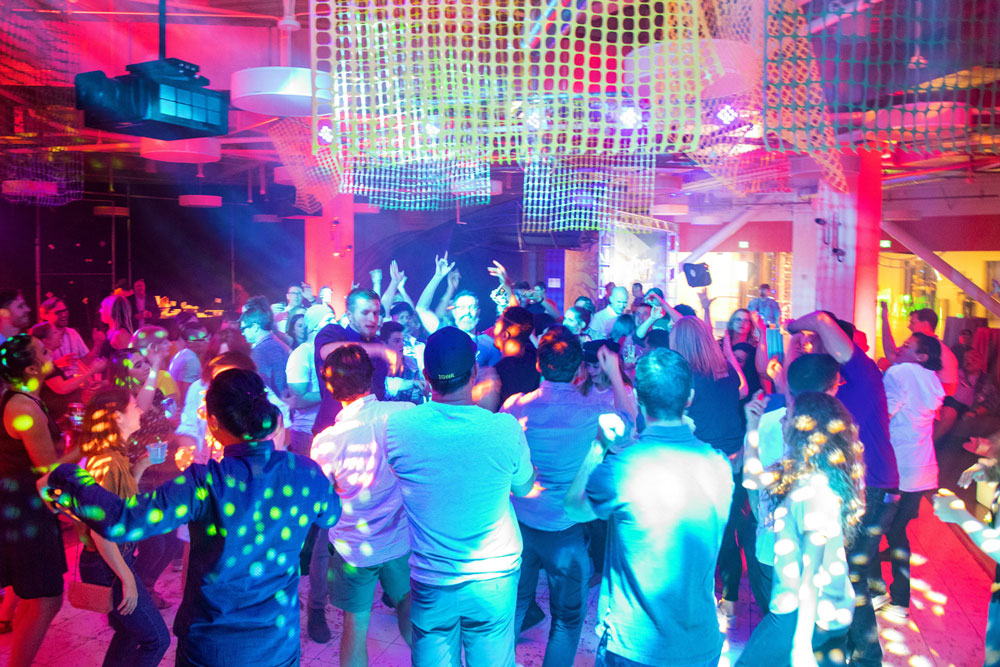
Here are a few example costs from this years budget:
- Opening party: $12,400
- Closing party: $32,400 (food, DJ, dance floor, drinks, etc)
- Speaker fees: $56,500 (including travel)
- Printing: $1,257 (signs, lanyards, etc)
- Venue: $13,000
- Speaker dinner: $4,000
- Food: $12,400 (breakfast, coffee, snacks—doesn’t include parties)
- Production: $45,000 (stage design, AV, photography, videography, etc)
- Staff: $51,200 (Event management, ConvertKit staff and travel, etc)
There are plenty of areas we could save money, but thankfully we have a profitable software company to back the event, so making a profit isn’t a high priority for us.
The experience
Set the tone and train the audience
When attendees first arrive at your conference they have no idea what to expect. As the organizer it’s your job to set the tone.
Should we bring our laptops or stay engaged with speakers? What’s the energy? How should we greet the speaker as they come on stage? If we love a talk would a standing ovation be a good way to show it? Or would I be the only one standing?
Every event is different, so attendees will come in wherever you set the bar. Here are five ways to train your audience to bring energy throughout the event:
- Welcome attendees at the door – WDS does an incredible job with this by having dozens of volunteers form a high-five gauntlet as you enter the theatre. They are full of energy and it transfers to the attendees. We don’t quite go to that level, but we have team members greeting each group of attendees at the elevator, making introductions, and starting they day with a warm smile.
- Have a great MC – Just because you founded the event or the company doesn’t mean you should MC. We chose Barrett and Alexis on our team as the event MCs because they bring a level of energy that would really be a stretch for me.
- Write your introductions in advance – So many MCs try to wing their speaker introductions. It rarely goes well. Write your full event script in advance, then get it on the stage monitors for talking points.
- Welcome each speaker to the stage with a song just for them – I walk on the stage to Taylor Swift each year. It started as a joke when the team picked “Shake it off” as my walk on song, but now we’ve made it tradition. Music is the single greatest hack for creating energy. It’s baffling to me how many conferences don’t leverage it.
The first day of the first year of the conference there wasn’t that much energy in the room. It was far from dead, but the audience wasn’t yet bringing the energy.
Throughout the day with great music, encouragement from the stage, and examples set by our team, they learned that this was a high energy event.
The morning of day two they greeted me with a standing ovation! The energy was next level. That carried throughout the entire event. Then the following year all the repeat attendees brought the energy from the beginning.
—
Running a conference is one of the most challenging and rewarding things I’ve ever done. It was especially hard to get going at first, but now as we go into our third year it is getting much easier and even more fun.
What do you want to know about running a conference like this? Ask in the comments!

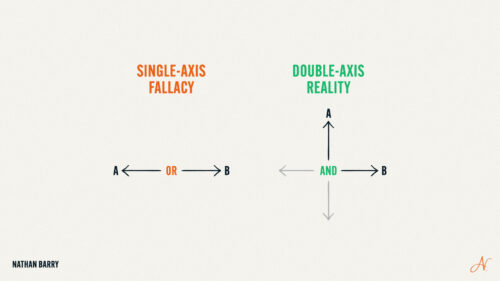

Thank you for sharing this Nathan! There are some really valuable points here and actionable ones!
We are running a conference in September here in Grand Rapids for our SaaS app and I got several nuggets from this post. Thanks!
I am planning my first conference in 2020. This was soooooo helpful and insightful. Thank you for sharing!
I really loved the detail and transparency here!
But I found myself getting very curious about “”revenue” (sponsors, ticket sales etc) – that offset the costs. Almost no mention at all – about attracting the $$ to run the conference, the timing, the number of sponsors, advertisers and how much) and the other work
Maybe this is the topic for a new blog post .. but some mention would be nice, to put all the costs in context
Thanks!
Great overview Nathan. It’s so refreshing to hear actual numbers of what it costs to put on an event and how it’s not the cash cow that some people think it is. Thanks for sharing!
Thanks so much for sharing this Nathan. I plan to run conferences and events next year and your advice is very valuable. Love it!
It’s pretty interesting how you picked a venue. To what extent was accessibility considered? (physical, auditory, visual, etc)
What future steps will you take to increase diversity of speakers in terms of race/ethnicity and ability?